Dee Estuary Birding
Monthly Newsletter...
November 2024
Newsletter
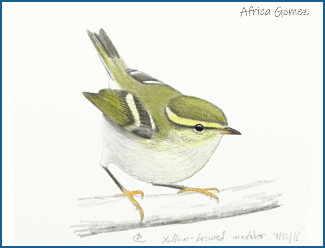
Black-tailed Godwits 2024
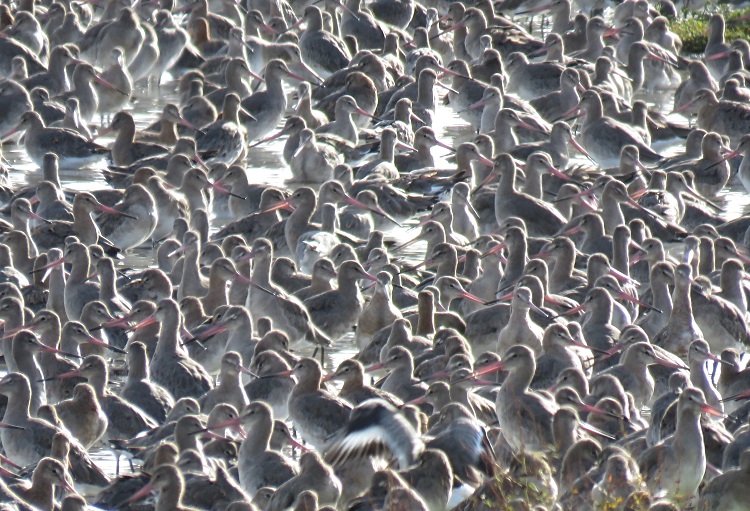
The past two years have seen record counts of
Black-tailed Godwits here on the Dee Estuary so I thought it was an
opportune time to write an article about them. Although it's quite
possible we get the odd individual from the continental race the
vast majority we see here are Icelandic breeding birds (Limosa limosa islandica).
This race is very much a success story with numbers increasing quite
dramatically since at least the 1980s - the WeBS (Wetland Bird Survey)
on-line data shows a ten-fold increase since 1981 here in the UK (Ref
1), with
the total international population showing a similar rise in numbers
and is currently thought to be at least 110,000.
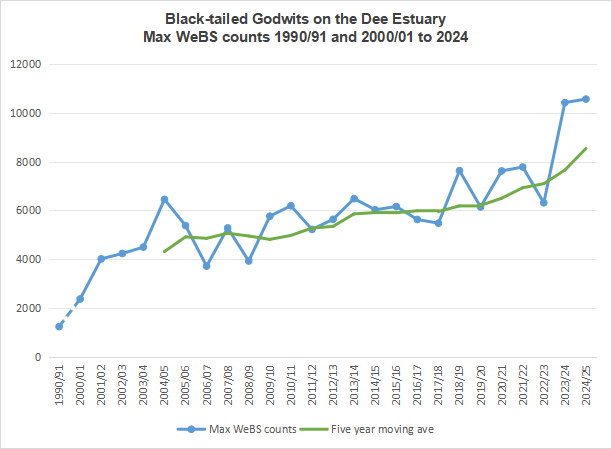
Here on the Dee Estuary, as the above graph shows, there was a sharp increase in numbers in the first five years of this century after which the rise in numbers has been much slower, until these past two years when there has been another big increase to 10,422 in 2023 and 10,565 in 2024.
As well as the rise in the population generally there has been a big shift in the monthly distribution on the Dee Estuary. In the 1990s they usually peaked in winter, but by 2004 the peak was in August and September. In particular counts in August showed a massive change with just 51 birds present in 2000 compared to 3,567 just five years later in 2004 - demonstrating the birds were now using the Dee Estuary as a post-breeding moulting site. The Welsh side of the estuary was particularly important for them at this time, and for the big count of 6,452 in September 2004, 94% were between Connah's Quay Nature Reserve and Bagillt Bank.
The Black-tailed Godwits which use the shore between
Heswall and West Kirby, and the adjacent inland feeding and roosting
sites, have been monitored almost on a daily basis for at least 25
years and we've seen some big changes both in numbers and in their
behaviour over that time. Here the shift from a winter peak to a
summer/autumn peak took place almost ten years after the same happened
on the Welsh shore, and the following two graphs tell the story.
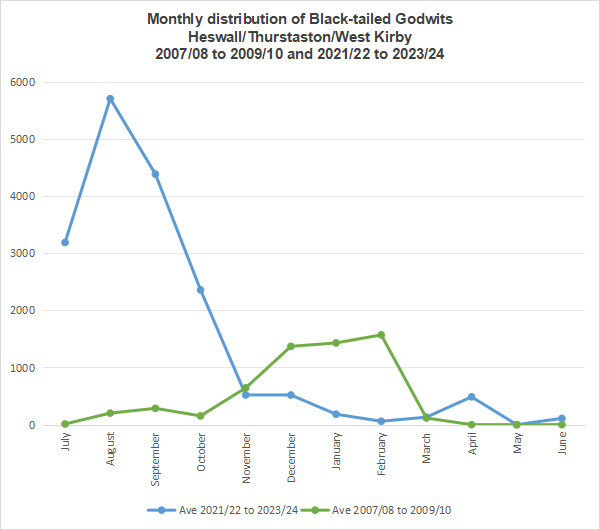
The shore between Heswall and West Kirby is very
muddy, just what the 'Blackwits' love! As you can see from the above
graph they were very much a winter visitor up to at least 2010 with
counts being typically
between one and two thousand from December to February. They were
virtually unknown inland until the autumn of 2008 when we started to
see a major change with a count of 773 on October 1st in a small horse
field near West Kirby which we called the Gilroy Wader Scrape. This
field was
quite wet with a shallow flood in the middle, and it was in this
flooded field that the godwits decided to roost.
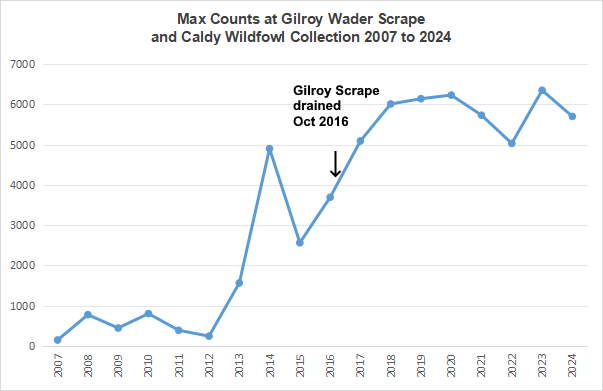
In 2013 numbers at Gilroy started to significantly
increase - and it became obvious, with birds arriving in July and
August, that they were using the field as a safe post-breeding moulting
site with little disturbance and access to freshwater. By 2016 Gilroy
was recognised as one of the most important moulting sites in the
country for birds returning from Iceland - so it was a huge shock when
the field was drained in October that year. But it didn't seem to
bother the godwits too much as they started using another small field
just over one mile to the south, also largely undisturbed and with
access to fresh water. Numbers continued to increase at this
field, the Caldy Wildfowl Collection, such that by 2023 I counted 6,350
on August 20th - which is still the site record. Amazingly, in this one
small field there were more Black-tailed Godwits than in the whole of
the Ribble Estuary or in Morecambe Bay! Watching them fly in was an
incredible experience.
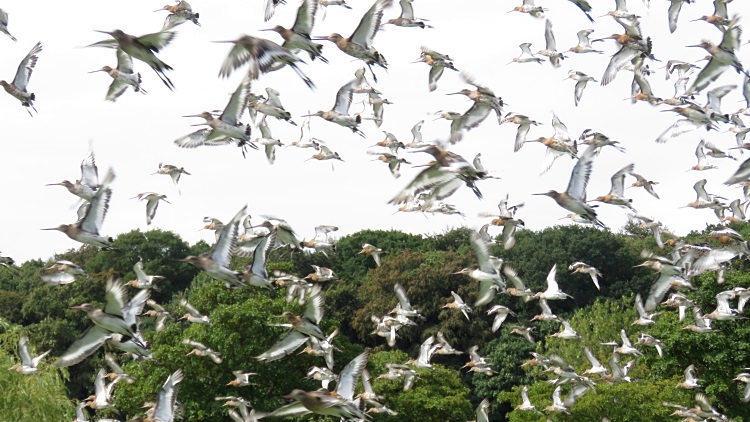
Typically, the godwits roost at the
moulting site about two hours either side of high tide, but sometimes
they stay all day arriving shortly after dawn and not leaving until
late afternoon - in the summer they often lie
down on the grass sun-bathing, living must be easy! When not roosting
they feed on
the adjacent estuary between Heswall and West Kirby, and at low tide
they can sometimes be right out on a sand bank in the middle of the
estuary and only
visible with a telescope. The big rise in numbers between July and
October has coincided with a big drop off in over-wintering numbers. We
don't know why this is but maybe it's simply that the birds are
depleting the available food so that there isn't enough to maintain
wintering birds.
The demise of the Gilroy wader scrape demonstrates how vunerable these inland roosting/moulting sites are. and the Caldy Wildfowl Collection field is just a private site and is unlikely to outlive the current owner. However, the good news is that Wirral Council have been given a £314,000 flood management grant (Ref 2) which will be used to create a wetland on the Hoylake Langfields close to where the Gilroy Wader Scrape was. This will be managed by Cheshire Wildlife Trust with, I understand, the involvement of the RSPB, particularly at the creation stage. I'm proud that an article of mine seems to have put this on the agenda - see 'Rewiding Hoylake Langfields (a fantasy?)' http://www.deeestuary.co.uk/news0421.htm. Lets hope the Black-tailed godwits like it!
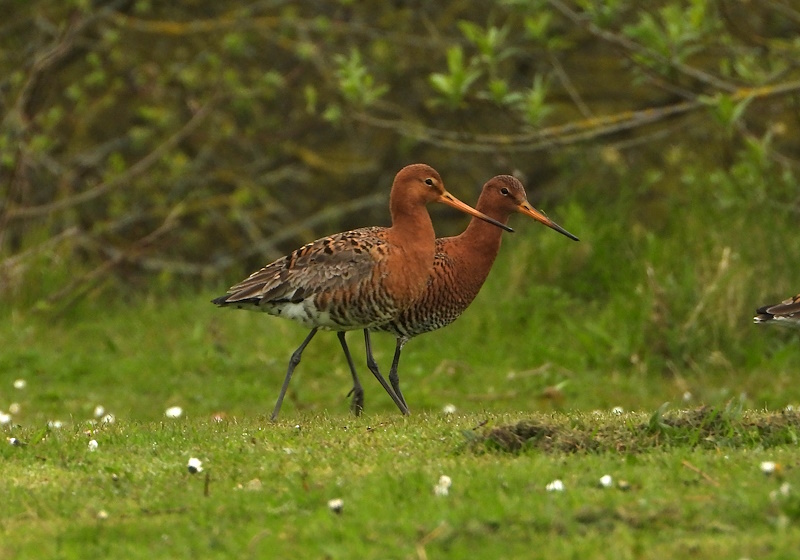
Colour Rings
Black-tailed Godwits are responsible for my obsession with colour rings. With their long legs the colour rings are relatively easy to spot and I was thrilled when I first saw them and realised I could track the movements of individual birds. The first one I saw, in 2005, had been ringed in Portugal, and since then I have logged a remarkable 3980 records, all on the Dee Estuary and its adjacent fields, thus making a significant contribution to the research into this species. Lots of other people have also read colour rings and the total number of records for colour-ringed Black-tailed Godwits on the Dee Estuary is 6,060 (as of mid-Oct 2024).
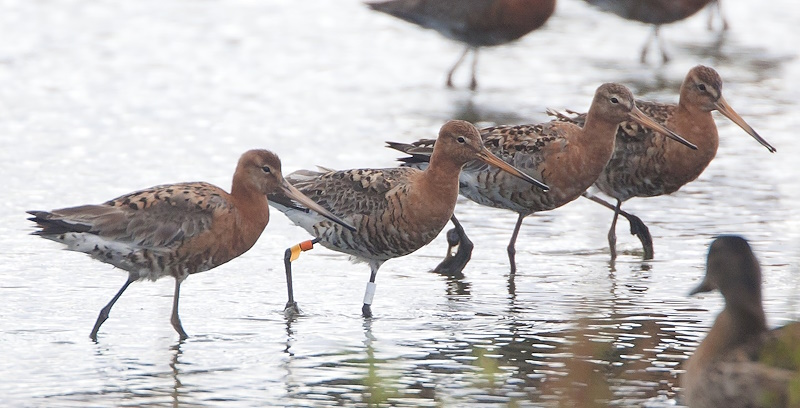
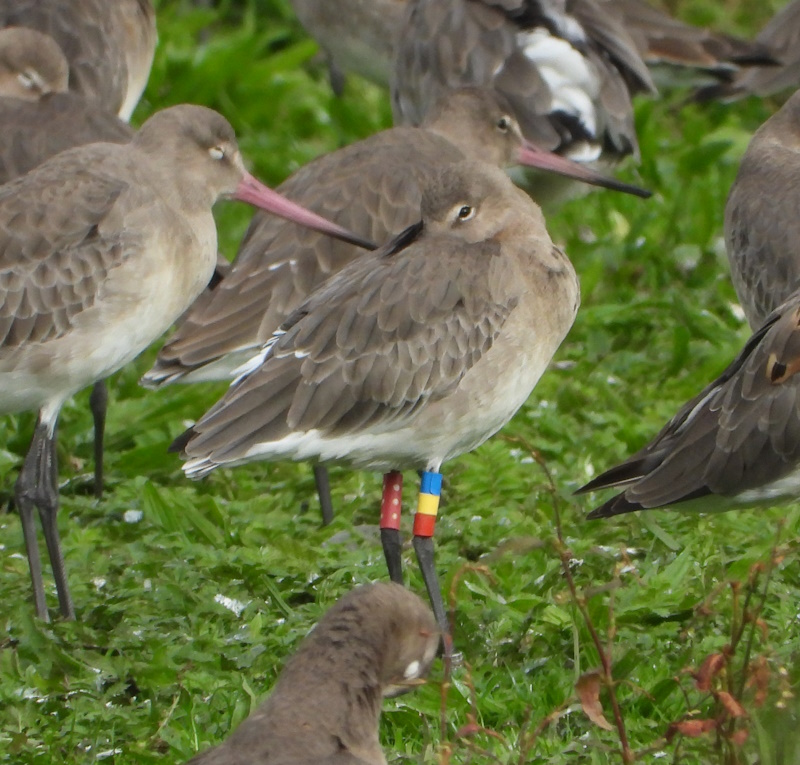
I have described the movements of many individual birds in my Colour
ring Reports in my monthly newsletters, a good example is the report in
the August 2024 edition - http://www.deeestuary.co.uk/news0824.htm#second.
But for this article I've done something different and summarised the
data in the form of two pie charts which show where these godwits go
when they are not on the Dee Estuary.
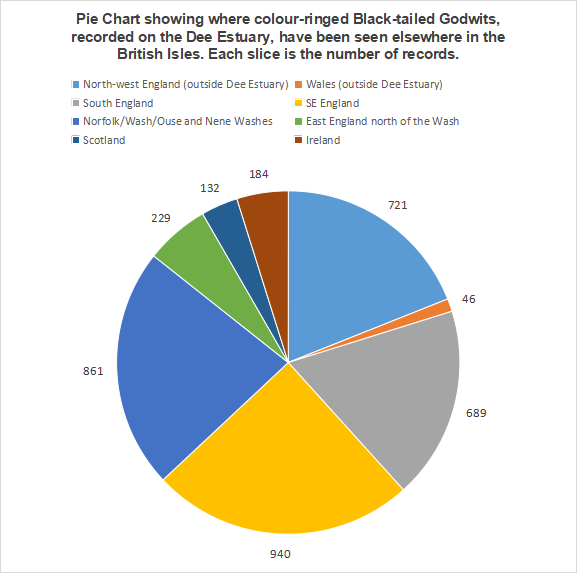
The above pie chart is a fair representaion of how the Blackwits distribute themselves across the British Isles. The birds are constantly on the move, of course, and this distribution will be constantly changing. In the north-west the Mersey Estuary is a major site for them but because of industry and the Manchester Ship Canal access is often difficult and we get few colour ring records from there. So most north-west records come from Marshside RSPB by the Ribble Estuary, and various sites around Morecambe Bay, particularly Leighton Moss RSPB.
South-east England is a major area for them and a
look at the map reveals why with a whole series of estuaries and
creeks, from the Swale and Medway in the south, the Thames Esuary with
its
various tributaries, then north to the Crouch, Blackwater Colne,
Stour and Orwell - we have records from all these. Along the south
coast is the complex of harbours - Portsmouth, Langstone and
Chichester, but we have records all the way west to Cornwall. Going
back up to the east coast the vast area of the Wash, plus the complex
of reserves along the North Norfolk coast, is hugely important to them,
as is the Humber estuary further north.
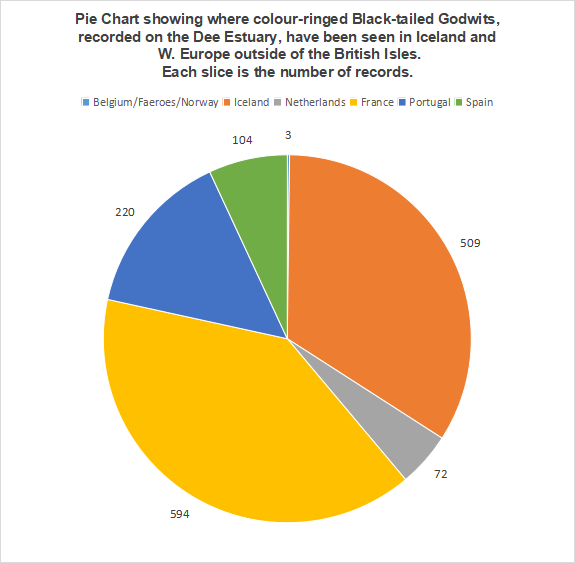
A lot of the Black-tailed Godwits which moult in the
UK in late summer and autumn go on to winter further south. When I
compiled the above pie chart of where the Blackwits are seen outside of
the British Isles I was quite surprised just how important France was
for them. Most are recorded along the Atlantic coast between St Nazaire
in the north to Bordeaux in the south with birds stopping over here on
their way to and from Portugal and Spain, as well as over-wintering
there. A major site is the rice fields on the Tagus Estuary in Portugal
where tens of thousands can sometimes be seen of both races. In spring
there is an interesting movement north-east from Portugal and Spain to
the Netherlands before they fly north-west in readiness for the
breeding season. They breed in Iceland, of course, and many of the
Icelandic records are from when the birds have been caught and ringed
there,
including many chicks.
References
1. Woodward, I.D., Calbrade, N.A., Birtles, A., Feather, G.A., Peck, K., Wotton, S.R., Shaw, J.M., Balmer, D.E. and Frost, T.M. 2024. Waterbirds in the UK 2022/23: The Wetland Bird Survey, BTO.
2. Ed Barnes, "WIRRAL Council has been awarded more
than £300,000 to develop a wetland nature reserve", Wirral Globe March
2024.
NOTE 1: Most of the data for the graphs and charts are from records which are on the Dee Estuary Birding Website (www.deeestuary.co.uk) and in my personal Colour Ring records database.
NOTE 2: Several articles on Black-tailed Godwits
have been published in previous Newsletters, including 'Observations
of Black-tailed Godwits'.
Richard Smith
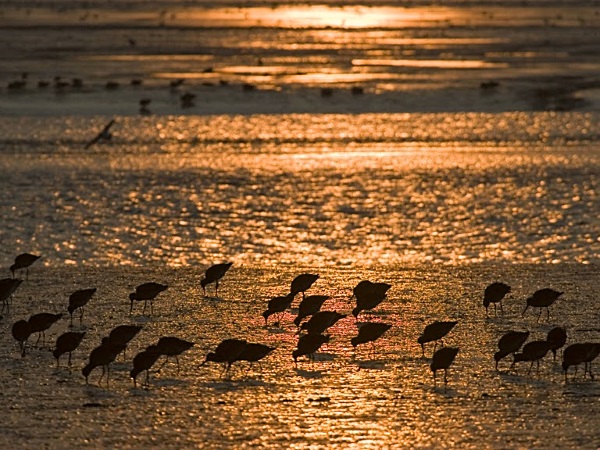
Colour Ring Report
Shelducks
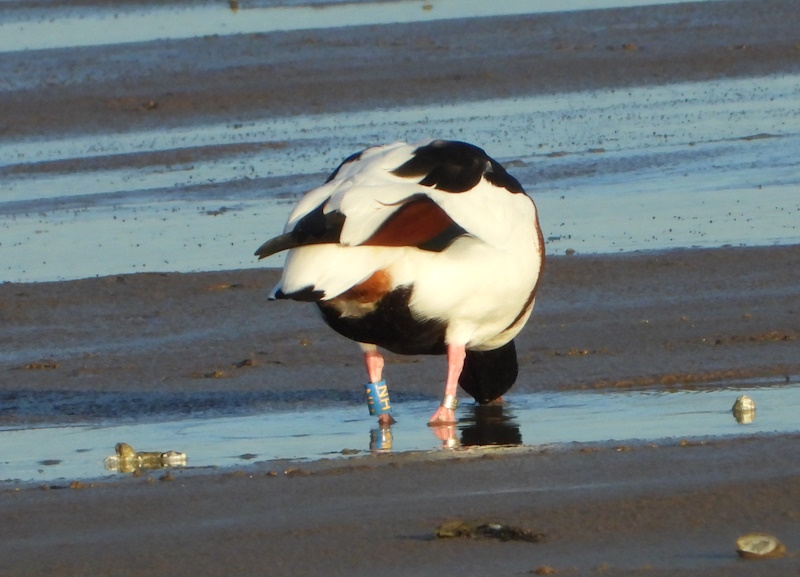
Blue HN
Ringed at Withymoor Pool, Shropshire, on 02/01/2022.
Recorded on Meols shore twice during October 2024. These were the first
records since ringing.
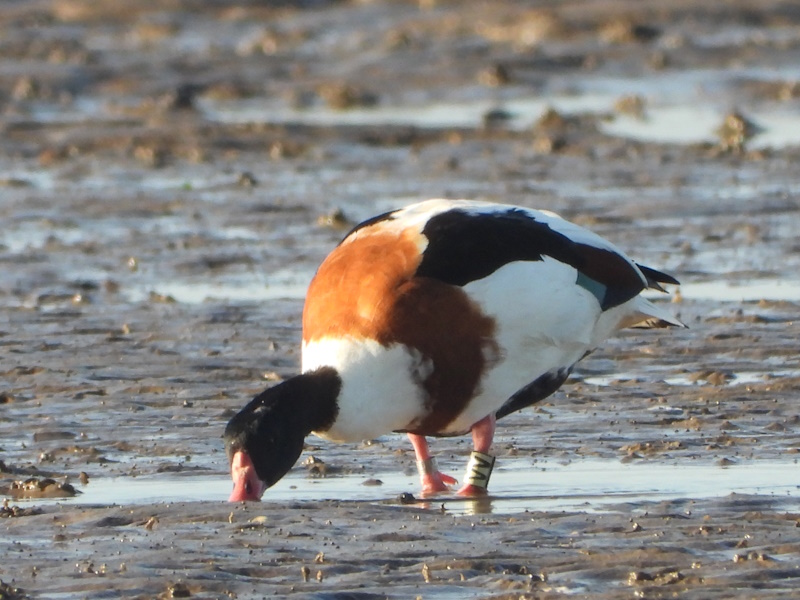
Lime VV
Ringed at WWT Martin Mere on 25/11/2019.
Recorded every winter at Martin Mere since ringing with the latest
record being on 26/02/2024.
It was seen on Caldy Shore on 26/10/2024, the first record away from
Martin Mere.
Knots
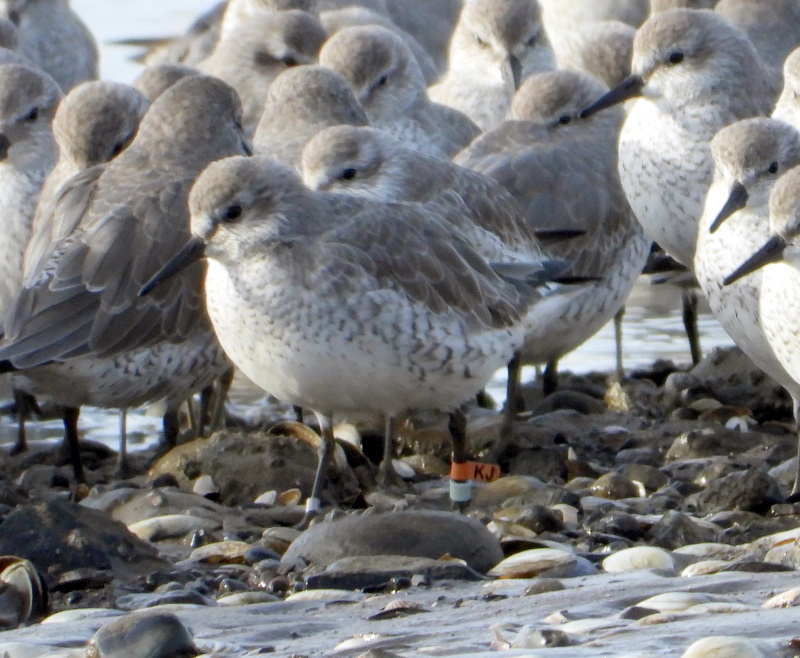
Oflag(KJ)/P
This one was ringed during the first catch of Knots at Altcar on
22/09/2017.
It's rarely seen being recorded just nine times, and only in autumn.
In 2018 it was on the island of Griend in the Dutch Waddensea, in 2019
at Snettisham, in 2021 at Thurstaston, 2022 at Crosby, 2023 at Richel
on the Waddensea and then at Thurstaston again on 25/10/2024.
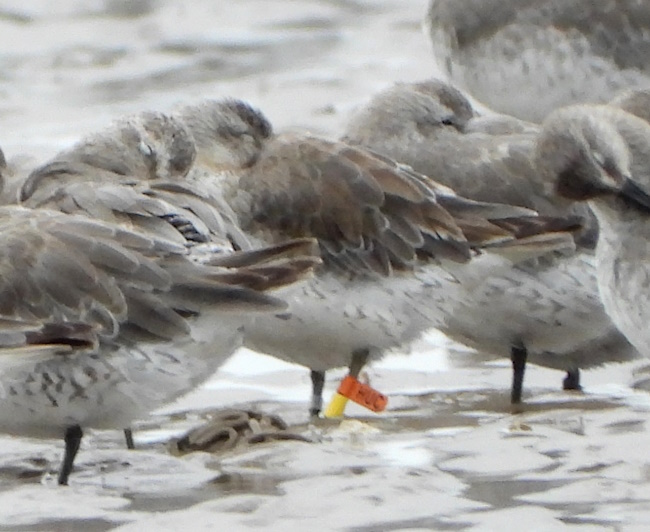
Oflag(HUC)/Y
Ringed at Castle Stuart, Inverness Firth, in September 2023, as a
juvenile.
This was one of several thousand 2CY Knots which spent this summer
feeding at Leasowe and roosting at Seaforth, being recorded at total of
17 times between 20/6/2024 and 26/08/2024. Some 2CY Knots disperse
quite widely during autumn and this one was back in Scotland, near
where it was ringed, in October.
Lesser Black-backed Gull
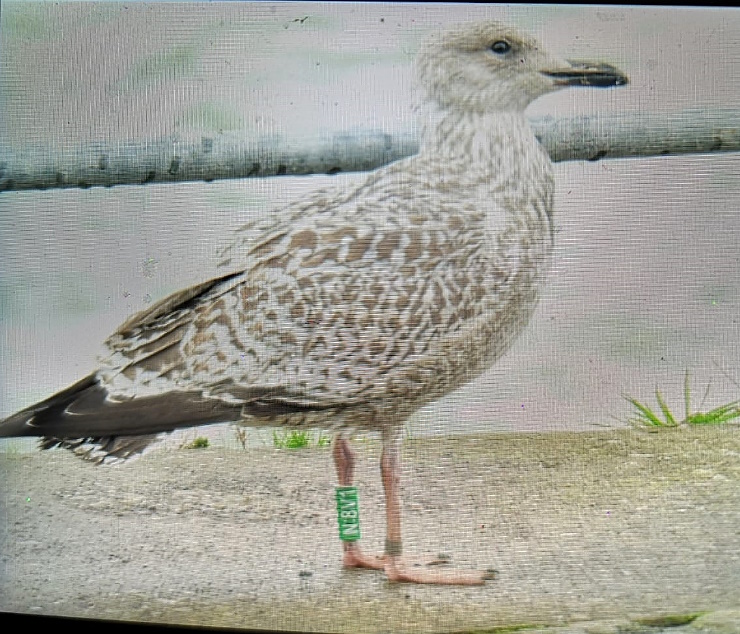
Green (N:8V1)
Ringed at Langden Head, Bowland, Lancs, in July 2024, as a chick.
Recorded at New Brighton on 09/10/2024.
Black-headed Gull
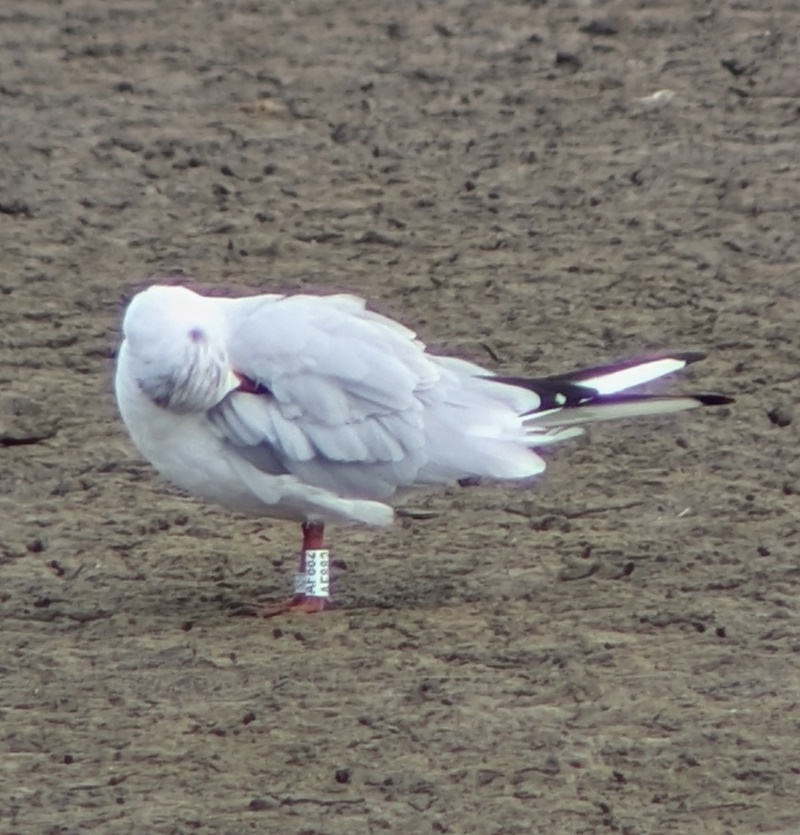
White (AF882)
Ringed on Helgoland, Germany, in February 2017.
April 2017 saw it on the German Baltic coast, east of Rostock, then in
September that year it had moved further east to Ueckermunde close to
the Polish border. Next record was in April 2019 at Gdansk, Poland.
A move westwards saw it on the River Trent at Nottingham in January
2020, it was getting closer to the Dee when it was at Widnes in October
2023 before it was spotted at the Connah's Quay Reserve in August 2024.
Colour Rings were recorded by Richard
Smith, Stephen
Hinde, Tony Ormond, Tim Kinch, Peter Haslem, Alex Jones, Richard
Speechley, Paul Ralston and Stephen Morris.
Richard Smith
October Bird News

Undoubtedly the species of the month was Yellow-browed Warbler. There was a massive influx of this Asian warbler into the country and we had 33 records around the Dee Estuary, nearly reaching the record count of 35 in the last big influx in 2016. I won't go into any more detail here as I will be publishing an article about them next month - it will be an update on my 2016 article sub-titled 'The Even More Mysterious Yellow-browed Warbler'.
Hawfinch was another species which arrived in good
numbers into the country in October but we only saw two which flew
along the shore at Hoylake flying west, on the 29th. Several more were
recorded further inland in Cheshire and Flintshire.
Two Lapland Buntings were seen, one at Hilbre on the
5th and one in Heswall Fields on the 21st. A Bearded Tit in the
reeds at Gronant was a nice record on the 15th.
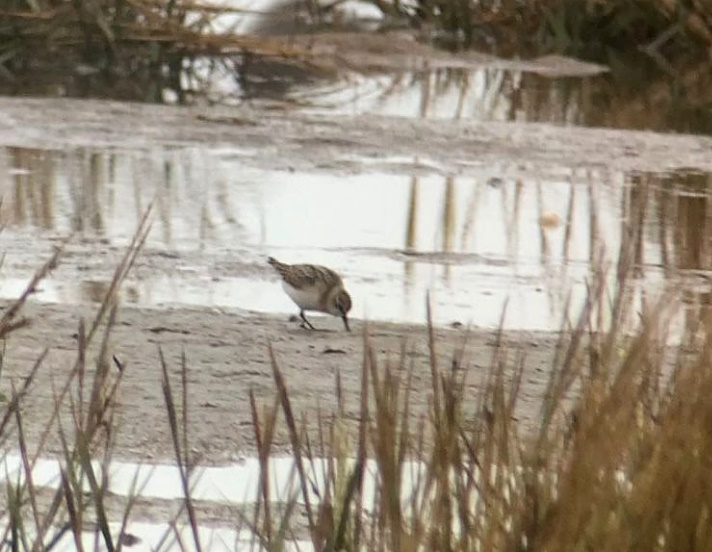
A Little Stint was on Meols Shore on several dates over the second half of the month. Over 10,000 Dunlin were roosting at low tide on East Hoyle Bank off Meols on the 30th. These will have been newly arrived birds from the east which will have moulted on the Waddensea after breeding in northern Scandinavia and Russia. I found these birds fascinating as the same number of Dunlin were in the exact same place three months ago, at the end of July. Those ones would have been newly arrived from Iceland and will all be in West Africa by now. Bird migration is just amazing!
Four Short-eared Owls off Denhall Quay and two in
the fields by Leasowe Lighthouse hopefully means it will be a good
winter for them. 10 Spoonbills were at Parkgate early in the month and
34 Cattle Egrets were at Burton Mere Wetlands early morning on the 24th
before most flew east - this smashes the previous record which, as far
as I'm aware, was 18 at the same site last year. Several Hen Harriers
have been seen including at least one grey male, two ringtails together
over Hoylake Langfields was a good record for that area.
What to expect in November
Our over-wintering Dunlin and Knot will arrive in force during the
month. After seeing just a few hundred on the estuary suddenly there
will be thousands. I well remember a large flock of newly arrived
Knots at Thurstaston around mid-month a couple of years ago putting on
a magnificent display, and I was the only one there to see it!
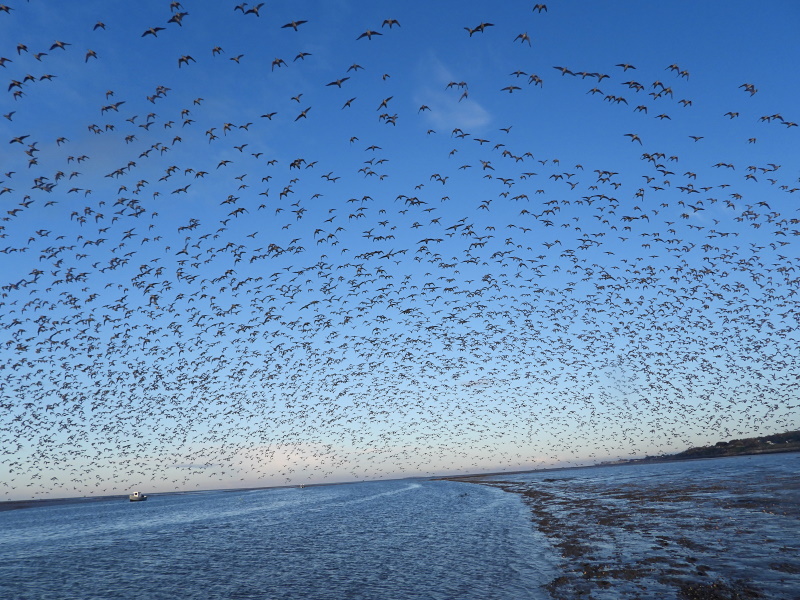
Another species which will increase rapidly is pale-bellied
Brent Geese and these should reach over 400 around Hilbre and West
Kirby shore. The first Snow Buntings of the winter will arrive, best
places to see these are anywhere along north Wirral, the Hilbre islands
and across to Point of Ayr and Gronant. Writing this at the end of
October it's too early to say whether it is going to be another good
Waxwing winter, like last winter, but if it is they could well start to
arrive by the month-end.
There will be plenty to see on the marshes with
Short-eared Owls, Hen Harriers, Great White Egrets and Cattle Egrets,
and a visit to Neston Reed-bed late afternoon should result in
double-figure Marsh Harriers flying to roost, and hopefully a Bittern
or two.
November Highest
Tides:
Nov 16th 10.53hrs (GMT) 9.7m
Nov 17th 11.36hrs (GMT) 9.7m